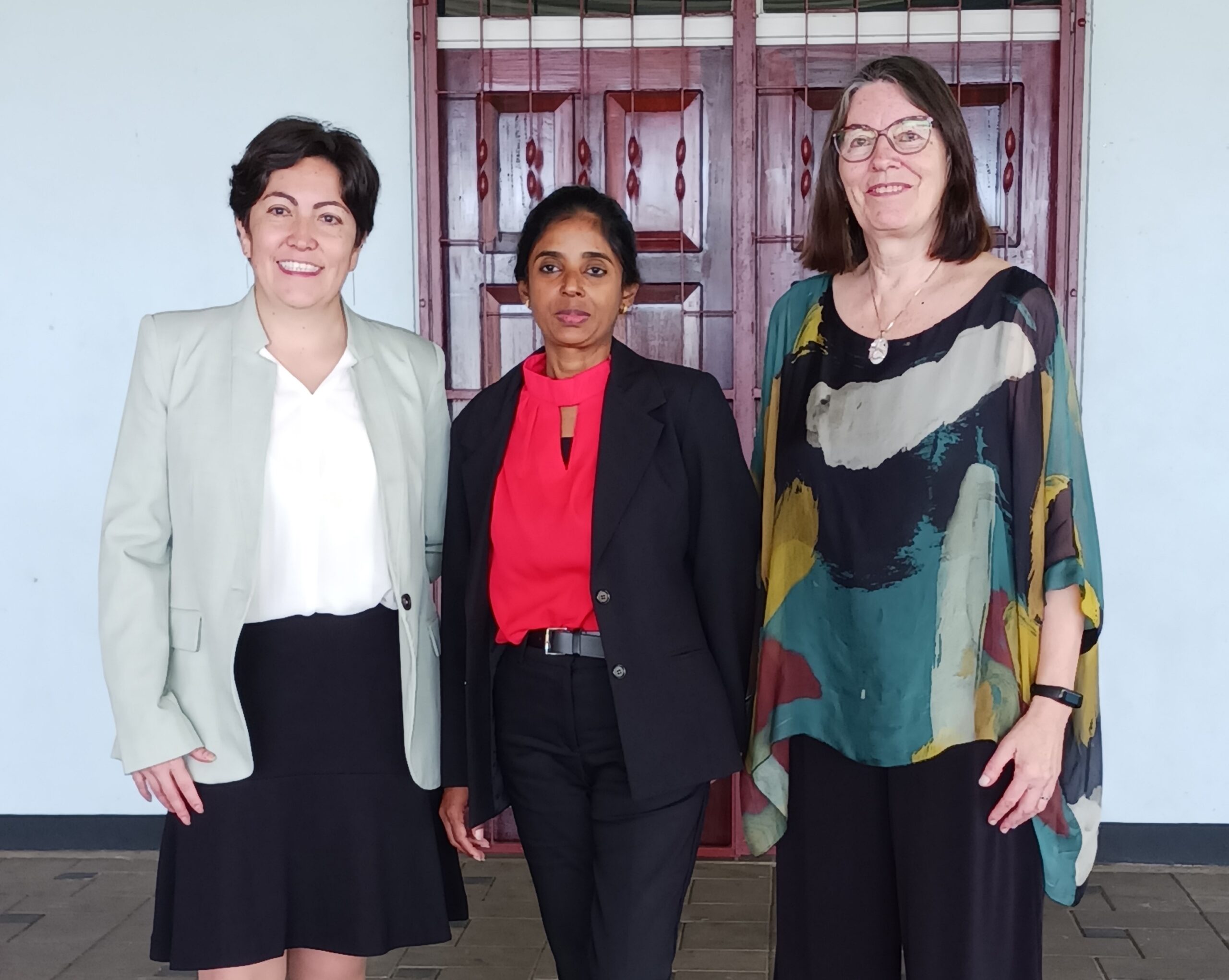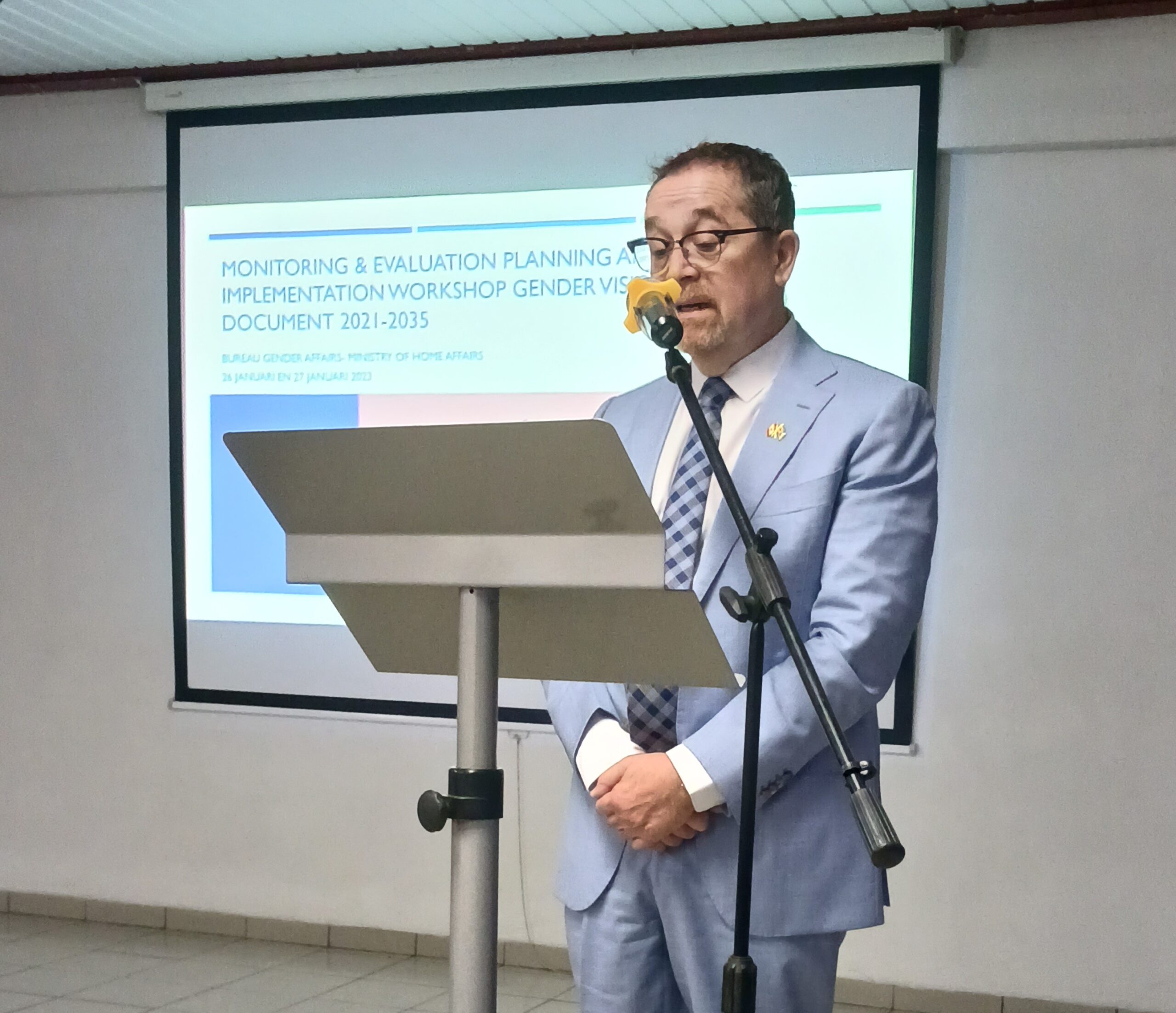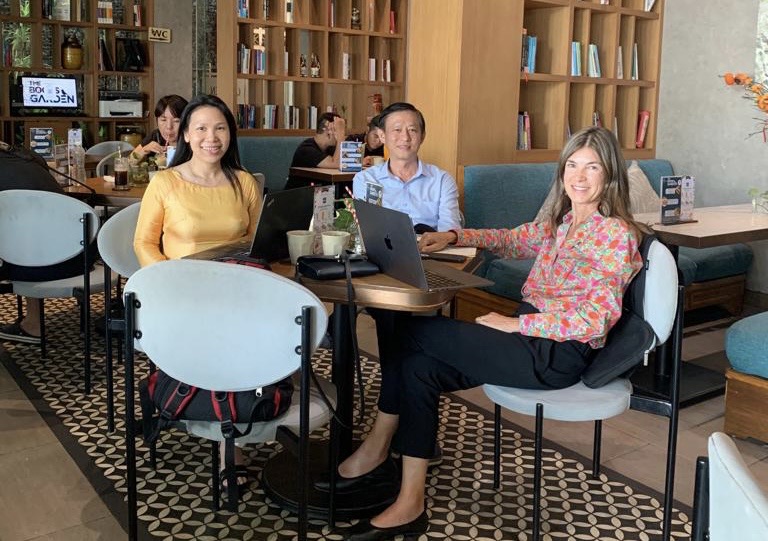Deepening Commitment to Suriname’s Gender Vision Policy

From left to right: CCEDM Program Manager Andrea Benavides, Head of the Bureau of Gender Affairs Suriname Shiefania Jahangier, and Catalyste+ Advisor Cheryl Hebert.
In Suriname, gender is a cross-cutting issue and a shared responsibility of many stakeholders such as various ministries, non-government, and community-based organizations. To address these complex gender-based needs, the Bureau Gender Affairs (BGA) at the Ministry of Home Affairs developed a robust 2021-2035 Gender Vision Policy. However, they recognized they lacked the capacity to assess the policy’s implementation and reached out to Catalyste+ for support.
To ensure the policy is creating the intended outcomes, Catalyste+ suggested developing a monitoring and evaluation (M&E) framework, which can help determine what information to collect to ensure that the goals in the Gender Vision Policy are reached.
“We experienced some challenges with the monitoring and we came to the conclusion that we needed such a plan for our Gender Vision Policy Document. We did not have the required knowledge in house for developing a M&E Plan,” said Shiefania Jahangier, Head of the Bureau of Gender Affairs.
Having worked with Catalyste+ since 2018, Shiefania felt confident to partner with a new Advisor. “We did not have the funds to hire a consultant and we also felt that we have had good experience and support from a [Catalyste+] Advisor. That is why we reached out once again to [Catalyste+] for this project.”
Catalyste+ Advisor (CA), Cheryl Hebert, a Gender and Policy Consultant, worked with the bureau virtually to develop an M&E Plan. Together, the BGA and the CA created an M&E comprised of four components:
1. Program description: Cheryl met with some key stakeholders for discussions which set the basis for the M&E Plan. This included purpose, roles & responsibilities of stakeholders, evaluation schedule, where the data will come from, how it will be collected and reported as well as recommendations for further work on collecting baseline data and targets.
2. Gender Results Framework: This document helps create the basis for tracking results and connecting planning, implementation and evaluation. It demonstrates relationships between the policy goals, objectives/outcomes, outputs, expected results and indicators.
3. A Legislation and Regulatory Monitoring Framework: This is a comprehensive inventory on the status of legislative and regulatory measures to support advancement of gender equality in Suriname.
4. A Planning and Reporting Template: This is a two-part tool to assist stakeholders such as ministries and non-government entities in planning and reporting on actions taken that make progress towards gender equality and align with the Gender Result Framework.
“The policy was very well developed, but I could see that it also had some gaps in terms of how you would move forward in implementing the policy so that it would show results. The group was committed and eager to do the work,” shared Cheryl.
In the months following the virtual assignment, Cheryl travelled to Suriname for a two-day workshop with the stakeholders responsible for implementing this policy to get feedback on the M&E Plan, exchange ideas on how to implement it, and further strengthen the bureau’s relationship and collaboration with these stakeholders.
After a successful workshop, where each stakeholder was able to understand how to put the Gender Vision Policy into action and learn strategies for communication and collaboration, a finalized M&E Plan was created. This plan ensures stakeholders are better prepared to monitor progress on the achievement of gender equality and equity in Suriname in the seven priority areas.

Canadian Ambassador to Suriname and Canadian High Commissioner to Guyana, Mr. Mark Berman, making opening remarks at the two-day workshop,
Gender policies are designed to address gender inequality and promote gender equity, but without proper monitoring and evaluation, it can be difficult to determine whether these policies are making a meaningful impact. Through this Monitoring and Evaluation Plan, the bureau can now assess the effectiveness of the policy using the Gender Results Framework and make adjustments to improve the policy’s impact.
Moving forward, the bureau will focus on assuming a leadership role and further engaging stakeholders. The bureau is working on getting commitment from policymakers and high-level institutions to help this cause. The M&E plan and the multi-stakeholder engagements can be a starting point to engage policymakers and get support for the bureau and for promoting activities towards gender equality.
Shiefania feels grateful for Catalyste+’s involvement, and is hopeful for the future. “Time will tell, but we see some positive signs. We have to take more action to closely involve our stakeholders. I think, from our part, we have to follow up on what we need to achieve at the end of the project.”
The key stakeholders involved in the workshop included the Gender Focal Points from the ministries; officials from the General Planning Office and the Planning Units of the ministries; officials from the National Bureau of Statistics, Central Registry Office and the Statistical Units from the ministries; and, for data collection around safety, the police, and the National Council of Domestic Violence. There was also participation from community organizations focused on gender and women, and international partners such as UNDP and UNFPA.


